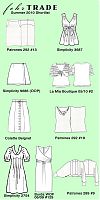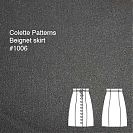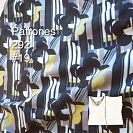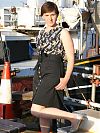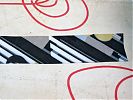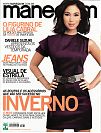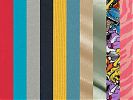We’re off to Paris today for a weekend of food and fabric shopping excess! Unlike Susannah, we’re driving down (and staying with friends), so I can’t really do any sewing to do en route, but I fully plan on hitting up Isabelle’s Montmatre fabric shops and doing some keen couture window shopping while I’m there, too. But because we’ve got the car, I don’t have any baggage limit on the amount of fabric (and macarons) I can buy, either. BWAHAHA!
Now seems a natural point to put my summer sewing on hold, and start sewing my wedding gown in earnest when I get back (more on that next week) in addition to my “OMG crazy busy secret project”, that’s going to keep me really on my toes in July (as soon as it’s announced, I can tell you what it is, honest).
So how have I done on my Summer Sewing Shortlist? Actually, not too badly! I was never expecting to make everything in one month, but I did manage to make…

